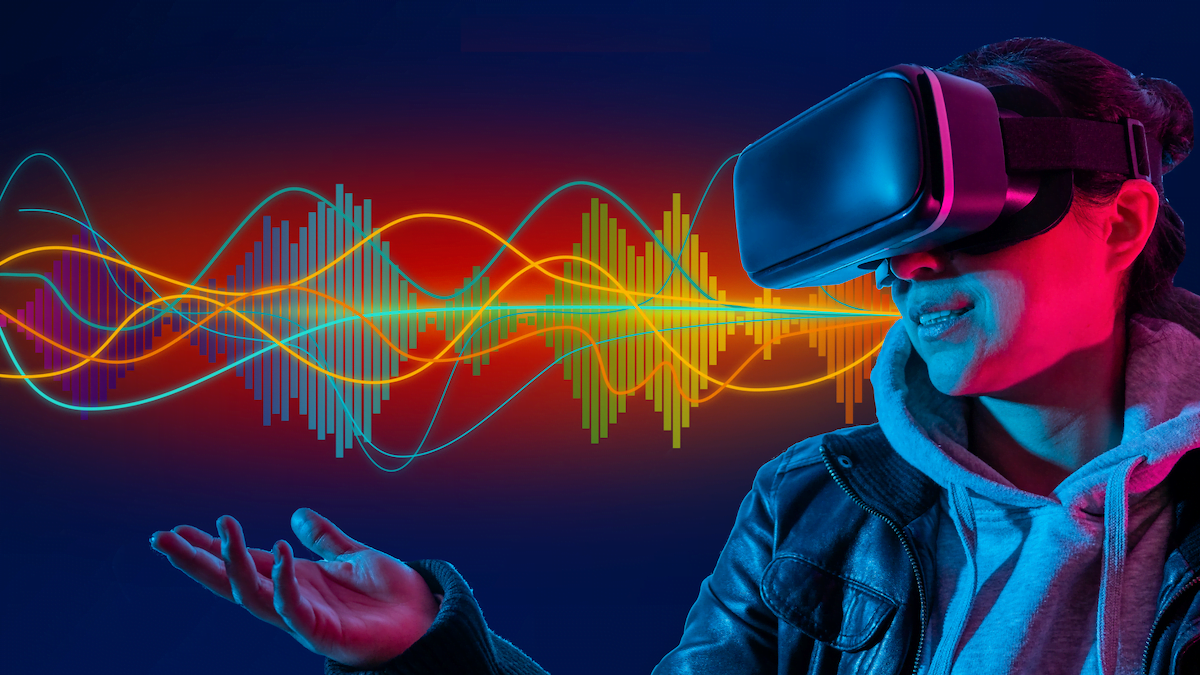Do you talk to your voice-enabled devices and prefer voice search over typing to find information online? Voice control technologies led by industry heavyweights like Amazon Alexa, Apple’s Siri, and Google Assistant have enjoyed a rapid rise in recent years. People like them because they allow for authentic, natural interactions and are instinctive.
Voice tech is also the gateway to intuitive metaverse experiences.
Think about how most of today’s VR headsets function. Users need VR controllers to interact with the environment, move around, and navigate. You can grab and push virtual objects with the help of these controllers, which are joystick-like devices. However, because they’re handheld, they restrict the possible use cases, such as working in a workplace metaverse where using your hands is an absolute necessity. On the other hand, voice commands let users control and navigate virtual worlds hands-free.
Voice-based commands can also boost the convenience of AR experiences – regardless of whether they work via smartphones or smart glasses. In most instances, using our voice is more comfortable than writing long texts.
Voice and speech recognition tech will shape the future metaverse
Two related technologies will be decisive in the future of a voice-commanded metaverse: speech recognition and voice recognition.
Speech recognition uses natural language processing and machine learning technologies to recognize the human language. It essentially helps to understand the exact words the speaker uses. The common use cases are real-time automatic translations, captions, and direct voice commands. It can be applied, for instance, in metaverse games so that players can give voice commands while simultaneously controlling the game with their hands.
Voice recognition’s purpose is to recognize the identity of the speaker. This technology doesn’t focus on the words being spoken but rather on features such as accents, dialects, and speed that characterize how a person speaks.
For example, it can help your devices recognize you. Hence the technology is mainly used for creating voice passwords for personal devices. It can also help train personal AI assistants like Siri and Alexa so that they only assist a specific person. A virtual conference where many speakers participate is a metaverse scenario in which voice recognition can be helpful. In such circumstances, it can be used to differentiate who said what.
The future metaverse will most likely rely heavily on both technologies. Consider, for example, the voice control software solution WearHF developed by Realwear. Users can integrate the software with the firm’s industry-grade headset to convert it into a hands-free device with the option of turning on/off the feature of recognizing the speaker’s voice.
Enabling voice commands opens up apps for smooth experiences.
Take, for example, metaverse shopping, where conversion rates can reach as high as 70% of the visitors, and the market size is expected to reach 800 billion by 2024.
If AR and VR creators can provide voice interactions in addition to point-and-click interactions, metaverse shopping can be safer thanks to security verification via voice. Moreover, consumers can wander around the virtual stores hands-free for a more immersive shopping experience.
Match voice-over tracks to 3D metaverse avatars to create improved facial expressions.
Voice tech is crucial for other metaverse use cases, as well. For example, we can leverage it to equip avatars with more realistic facial expressions. The leading AI and metaverse company NVIDIA is developing the application Omniverse Audio2Face. The app leverages generative AI technologies to sync voice-over audio with the animation of a 3D character. The application can be used to build realistic metaverse avatars or real-time digital assistants.
Read More: nftnewstoday.com









 Bitcoin
Bitcoin  Ethereum
Ethereum  Tether
Tether  Solana
Solana  XRP
XRP  Dogecoin
Dogecoin  USDC
USDC  Cardano
Cardano  Lido Staked Ether
Lido Staked Ether  Avalanche
Avalanche  TRON
TRON  Toncoin
Toncoin  Stellar
Stellar  Shiba Inu
Shiba Inu  Wrapped stETH
Wrapped stETH  Wrapped Bitcoin
Wrapped Bitcoin  Polkadot
Polkadot  Chainlink
Chainlink  Bitcoin Cash
Bitcoin Cash  WETH
WETH  Sui
Sui  Pepe
Pepe  NEAR Protocol
NEAR Protocol  LEO Token
LEO Token  Litecoin
Litecoin  Uniswap
Uniswap  Aptos
Aptos  Wrapped eETH
Wrapped eETH  Hedera
Hedera  Internet Computer
Internet Computer  USDS
USDS  Cronos
Cronos  Ethereum Classic
Ethereum Classic  POL (ex-MATIC)
POL (ex-MATIC)  Bittensor
Bittensor  Render
Render  Artificial Superintelligence Alliance
Artificial Superintelligence Alliance  Ethena USDe
Ethena USDe  Algorand
Algorand  Arbitrum
Arbitrum  Filecoin
Filecoin  Bonk
Bonk  Celestia
Celestia  Stacks
Stacks  Dai
Dai  Cosmos Hub
Cosmos Hub  WhiteBIT Coin
WhiteBIT Coin